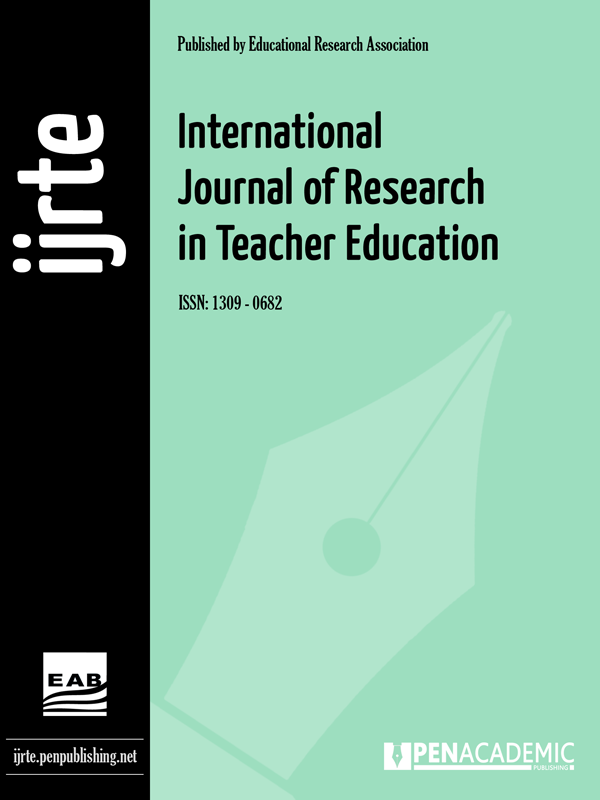- Abdolzadeh, F. (2014) Handling causes of teacher burout in ELT classrooms. International Journal of Language Learning and Applied Linguistics World (IJLLALW) 7(3), 636-641. [Google Scholar]
- Arnaiz, P., & Guillén, F. (2012). Foreign language anxiety in a Spanish university setting: Interpersonal differences. Revista de Psicodidáctica, 17(1), 5-26. [Google Scholar]
- Ashtari, Z., Farhady, Y., & Khodaee, M. R. (2009). Relationship between job burnout and work performance in a sample of Iranian mental health staff. African Journal of Psychiatry, 12(1), 71-74. [Google Scholar]
- Balay, R., & Engin, A. (2007). A research to determine the burnout level of elementary school supervisors working in GAP region. Ankara University, Journal of Faculty of Educational Sciences, year, 40(2), 205-232. [Google Scholar]
- Boonrat, P., Wisessuwan, A., & Tubsree, C. (2014). Foreign language classroom anxiety of secondary students of international education program for basic education, Piboonbumpen Demonstration School, Burapha University. HRD Journal, 3(2), 119-131. [Google Scholar]
- Brown, L. (2008). Language and anxiety: An ethnographic study of international postgraduate students. Evaluation and Research in Education, 21(2), 75-95. [Google Scholar]
- Byrne, M. B. (1994). Burnout: Testing for the validity, replication, and invariance of causal structure across elementary, intermediate, and secondary teachers. American Educational Research Journal, 31(3), 645-673. [Google Scholar]
- Cheng, Y. S. (2001). Learners’ beliefs and second language anxiety. Concentric: Studies in English literature and linguistics, 27(2), 75-90. [Google Scholar]
- Fivesa, H., Hammana, D., & Olivarez, A. (2007). Does burnout begin with student teaching? Analyzing efficacy, burnout, and support during the student-teaching semester. Teaching and Teacher Education, 23, 916-934. [Google Scholar]
- Freudenberger, H. (1974). Staff burnout. Journal of Social Issues, 30(1), 159-165. [Google Scholar]
- Heidari, S., Gorjian, B. (2017). The effect of the level of English teachers' burnout on the EFL learners' general English achievement at senior high school. Journal of Applied Linguistics and Language Learning, 3(2), 41-47. [Google Scholar]
- Horwitz, E. K., Horwitz, M. B., & Cope, J. (1986). Foreign language classroom anxiety. The modern language journal, 70(2), 125-132. [Google Scholar]
- Hosseini Fatemi, A., & Raufi, R. (2014). Burnout and teaching style among Iranian English language educators in public schools and private institutes: a case-comparison study. International Journal of Research Studies in Language Learning, 1, 1-7. [Google Scholar]
- Huang, Y. W. (2014). Self and Language Anxiety. English Language and Literature Studies, 4(2), 66-77. [Google Scholar]
- Idri, N. (2012). Foreign Language Anxiety among Algerian EFL students: The case of first year students of English at the University Abderahmane Mira-Bejaia: LMD (license/Master/Doctorate) System Group. Universal Journal of Education and General Studies, 1(3), 55-64. [Google Scholar]
- Jennett, H. K., Harris, S. L., & Mesibov, G. B. (2003). Commitment to philosophy, teacher efficacy, and burnout among teachers of children with autism. Journal of Autism and Developmental Disorders, 33, 583-593. [Google Scholar]
- Kırılmaz, A. Y., Çelen, Ü., & Sarp, N. (2003). A study on teacher burnout with a group of primary school teachers. Elementary Education Online, 2(1), 2-9. [Google Scholar]
- Khawaja, N. G., Chan, S., & Stein, G. (2017). The Relationship Between Second Language Anxiety and International Nursing Students Stress. Journal of International Students, 7(3), 601-620. [Google Scholar]
- Khezerlou, E. (2017). Professional self-esteem as a predictor of teacher burnout across Iranian and Turkish EFL teachers. Iranian Journal of Language Teaching Research, 5(1), 113-130. [Google Scholar]
- MacIntyre, P. D., Noels, K. A., & Clément, R. (1997). Biases in self‐ratings of second language proficiency: The role of language anxiety. Language learning, 47(2), 265-287. [Google Scholar]
- Maslach, C., & Jackson, S. E. (1981). The measurement of experienced-burnout. Journal of Occupational Behavior, 2, 99-113. [Google Scholar]
- Maslach, C., & Jackson, S. E. (1986). Maslach burnout inventory manual (2nd ed.). Palo Alto, CA: Consulting Psychologist Press. [Google Scholar]
- Parker, P. A., & Kulik, J. A. (1995). Burnout, self-and supervisor-rated job performance, and absenteeism among nurses. Journal of Behavioral Medicine, 18(6), 581-599. [Google Scholar]
- Sabancı, A. (2009). The effect of primary school teachers’ burnout on organizational health. Procedia-Social and Behavioral Sciences, 1(1), 195-205. [Google Scholar]
- Sadeghi, K., & Khezrlou, S. (2014). Burnout among English language teachers in Iran: Do socio-demographic characteristics matter?. Procedia-Social and Behavioral Sciences, 98, 1590-1598. [Google Scholar]
- Serraj, S., & bt Noordin, N. (2013). Relationship among Iranian EFL Students' Foreign Language Anxiety, Foreign Language Listening Anxiety and Their Listening Comprehension. English Language Teaching, 6(5), 1. [Google Scholar]
- Skaalvik, E. M., & Skaalvik, S. (2010). Teacher self-efficacy and teacher burnout: a study of relations. Teaching and Teacher Education, 26, 1059-1069. [Google Scholar]
- Tran, T. T. T., Moni, K., & Baldauf Jr, R. B. (2013). Foreign language anxiety: understanding its sources and effects from insiders' perspectives. The Journal of Asia TEFL, 10(1), 95-131. [Google Scholar]
- Weinreich, T. (2014). Burnout and work engagement among elementary teachers: Are there differences among teachers? A cross-sectional study. Bachelor's thesis, University of Twente. Retrieved May 2015 from http://essay.utwente.nl/65818/. [Google Scholar]
- Williams, M., & Burden, R. (2007). Psychology for language teachers: A social constructivist approach. Cambridge: Cambridge University Press. [Google Scholar]
- Young, D. J. (1991). Creating a low-anxiety classroom environment: What does language anxiety research suggest?. Modern Language Journal, 75, 426-437. [Google Scholar]
|


